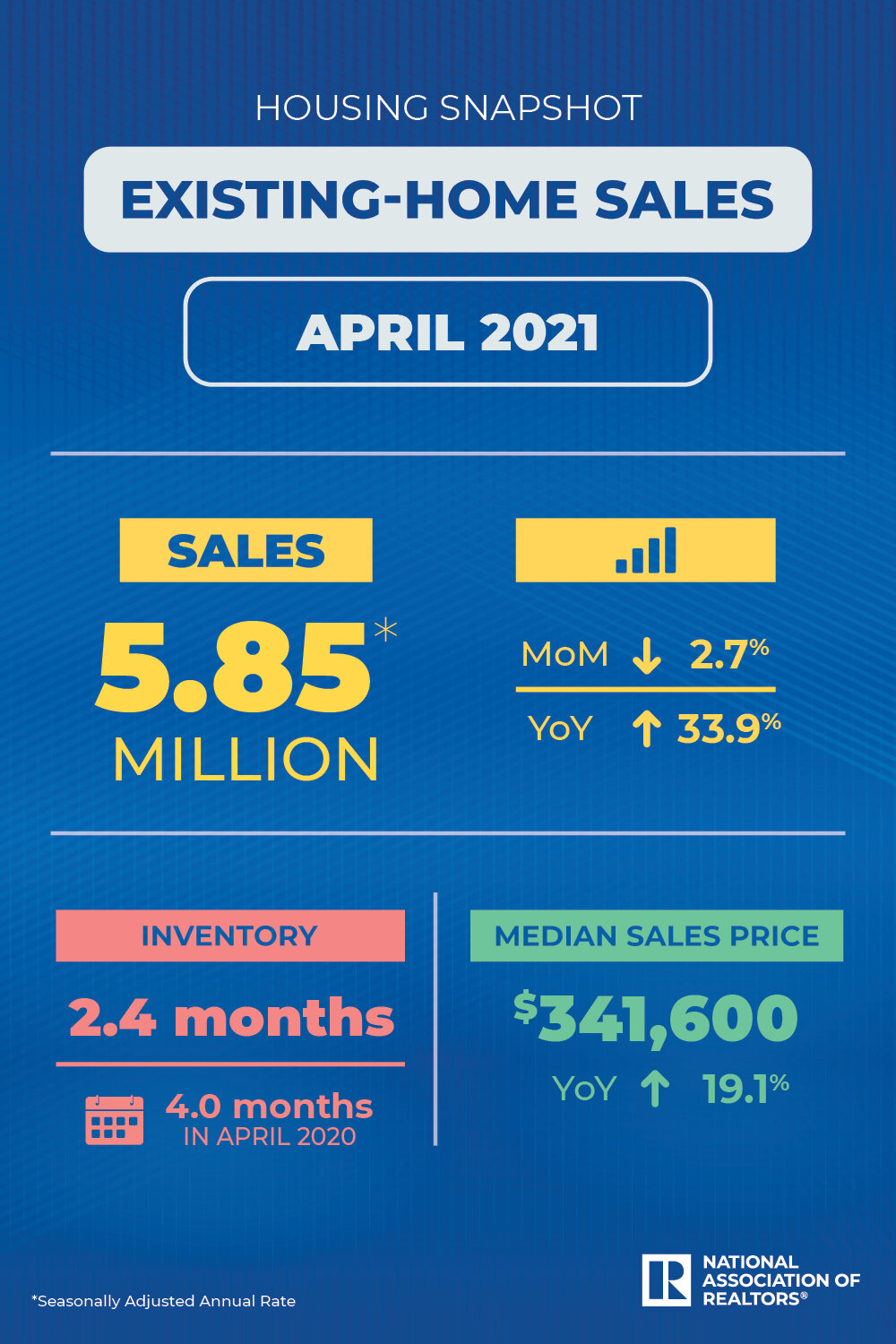Email Sign Up For Our Free Weekly Newsletter
According to the National Association of Realtors, U.S. existing-home sales stalled in April 2021, marking three straight months of declines. All but one of the four major U.S. regions witnessed month-over-month drops in home sales, but each registered double-digit year-over-year gains for April.
Total existing-home sales, completed transactions that include single-family homes, townhomes, condominiums and co-ops, slipped 2.7% from March to a seasonally-adjusted annual rate of 5.85 million in April. Sales overall jumped year-over-year, up 33.9% from a year ago (4.37 million in April 2020).
Lawrence Yun
“Home sales were down again in April from the prior month, as housing supply continues to fall short of demand,” said Lawrence Yun, NAR’s chief economist. “We’ll see more inventory come to the market later this year as further COVID-19 vaccinations are administered and potential home sellers become more comfortable listing and showing their homes. The falling number of homeowners in mortgage forbearance will also bring about more inventory.
“Despite the decline, housing demand is still strong compared to one year ago, evidenced by home sales from this January to April, which are up 20% compared to 2020,” Yun continued. “The additional supply projected for the market should cool down the torrid pace of price appreciation later in the year.”
The median existing-home price for all housing types in April was $341,600, up 19.1% from April 2020 ($286,800), as every region recorded price increases. This is a record high and marks 110 straight months of year-over-year gains.
Total housing inventory at the end of April amounted to 1.16 million units, up 10.5% from March’s inventory and down 20.5% from one year ago (1.46 million). Unsold inventory sits at a 2.4-month supply at the current sales pace, slightly up from March’s 2.1-month supply and down from the 4.0-month supply recorded in April 2020. These numbers continue to represent near-record lows. NAR first began tracking the single-family home supply in 1982.
Properties typically remained on the market for 17 days in April, down from 18 days in March and from 27 days in April 2020. Eighty-eight percent of the homes sold in April 2021 were on the market for less than a month.
First-time buyers were responsible for 31% of sales in April, down from 32% in March and 36% in April 2020. NAR’s 2020 Profile of Home Buyers and Sellers – released in late 2020 – revealed that the annual share of first-time buyers was 31%.
“First-time buyers in particular are having trouble securing that first home for a multitude of reasons, including not enough affordable properties, competition with cash buyers and properties leaving the market at such a rapid pace,” Yun said.
Individual investors or second-home buyers, who account for many cash sales, purchased 17% of homes in April, up from 15% in March and 10% in April 2020. All-cash sales accounted for 25% of transactions in April, up from both 23% in March and 15% in April 2020.
Distressed sales – foreclosures and short sales – represented less than 1% of sales in April, equal to March’s percentage but down from 3% in April 2020.
According to Freddie Mac, the average commitment rate for a 30-year, conventional, fixed-rate mortgage was 3.06% in April, down from 3.08% in March. The average commitment rate across all of 2020 was 3.11%. Yun expects the 30-year fixed-rate mortgage to remain below 3.5% in 2021.
Single-family and Condo/Co-op Sales
Single-family home sales dropped to a seasonally-adjusted annual rate of 5.13 million in April, down 3.2% from 5.30 million in March, and up 28.9% from one year ago. The median existing single-family home price was $347,400 in April, up 20.3% from April 2020.
Existing condominium and co-op sales were recorded at a seasonally-adjusted annual rate of 720,000 units in April, up 1.4% from March and up 84.6% from one year ago. The median existing condo price was $300,400 in April, an increase of 12.6% from a year ago.
